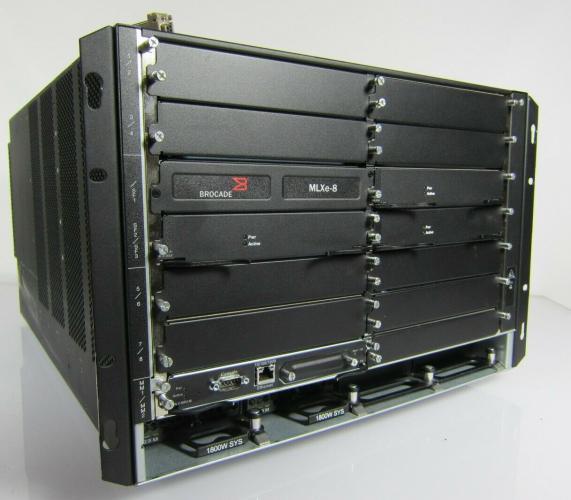Moving on from the MLXe: Going Hard Core.
Moving on from the MLXe: Going Hard Core.
Finding the right core router is a big deal. The work those things do is intense: multiple protocols, redistribution, leaves and spines, wire speed on endless interfaces. The stresses on those things are extreme and getting more so by the minute. We used to recommend the MLXe to our Brocade clients, and in its prime it was reliable, configurable, malleable to your needs. But let’s face it, Brocade’s old flagship is getting long in the tooth. So, what’s next for users that need to go Hard Core?
For me, I think of Hard Core as Jack Black, multi-instrumental and take no prisoners, but maybe you think of it more like Shape Magazine a workout for your network that consists of constant monitoring through many exercises. Maybe it’s a little of both. But if you’re looking to take a step up from aging hardware, let’s take a look at the latest versions of Hard Core.
Extreme Networks took up the Brocade torch by continuing support of the MLXe replacements, the SLX line of routers, but the modular version of this just hasn't caught on with our users yet, chiefly due to early software implementations. Recent updates have ironed out many of the bugs in those initial releases, and the platform is starting to turn heads, but the core routers aren’t a major player yet. We've had more interest in the smaller 1RU fixed-port iterations like the SLX9640. Brocade has a great track record for Extreme to build on, but we're maintaining a wait and see attitude on the SLX product line at this point. They’ve got a good per-port value, but they just haven’t been too popular with our end users to date. Not quite Hard Core.
A more trusted option may be the Cisco ASR series. The long-running leader in network hardware has created a robust set of routing options. Consisting of various 1RU fixed-port versions for local implementations up to the Godzilla ASR 9922, a 44RU aggregation behemoth with a capacity of 160 Tbps, there's a wide range of options to choose from. Cisco also has the benefit of a tested, trusted IOS supporting the latest, greatest protocols and implementations, but they’ll cost you. The secondary market isn’t seeing a flood of these ASR routers just yet, making them less of a value proposition, and Cisco’s stubborn adherence to proprietary optics make the cost of wiring just a little bit pricier than we’d like. They’re sticking with the Sony route, quality that you can rely on with a sticker shock that might make you think twice. Bougie Hard Core.
Last in our shortlist of options for core routing is the Juniper MX series, which is the most popular and respected among our users. Utilizing Juniper’s own JunOS and varying from the 2RU MX80 up to the 45RU MX2020, these things can nestle up in a remote rack or blare metal in the hardest of cores. Though the MX2020 only has a max capacity of 80 Tbps (half that of Cisco’s ASR9922), that thing will definitely blow the doors off your cabinet. Our users’ sweet spot continues to be the MX240, MX480, and MX960 units, infinitely configurable and robust players in the network market. Accommodating any number of differing line cards, from the old RJ45s for legacy network applications all the way up to 100G CFP, CFP2, and QSFP28 optics, these things shred their competitors, don’t require proprietary optics, and are one the secondary market at a price that won’t break your core budget. There are also a variety of routing engine options, from the 8 gig RE-S-1800 model to the 64 gig RE-S-X6-64G. That 64 gigabytes will hold more tables than an IKEA warehouse. Feedback from our users: Mobb Deep Hard Core. Minor Threat Hard Core.
So, if you’re thinking that your MLXe chassis is meeting your needs, we’ll set you up with the line cards and managements to keep that thing humming. But if you need to turn up the wattage, call the Terabit Sales team to go Hard Core with an SLX, ASR, or MX series router that won’t make your wallet feel cored. Call us at +1 (415) 230-5353 or click here to email us.

